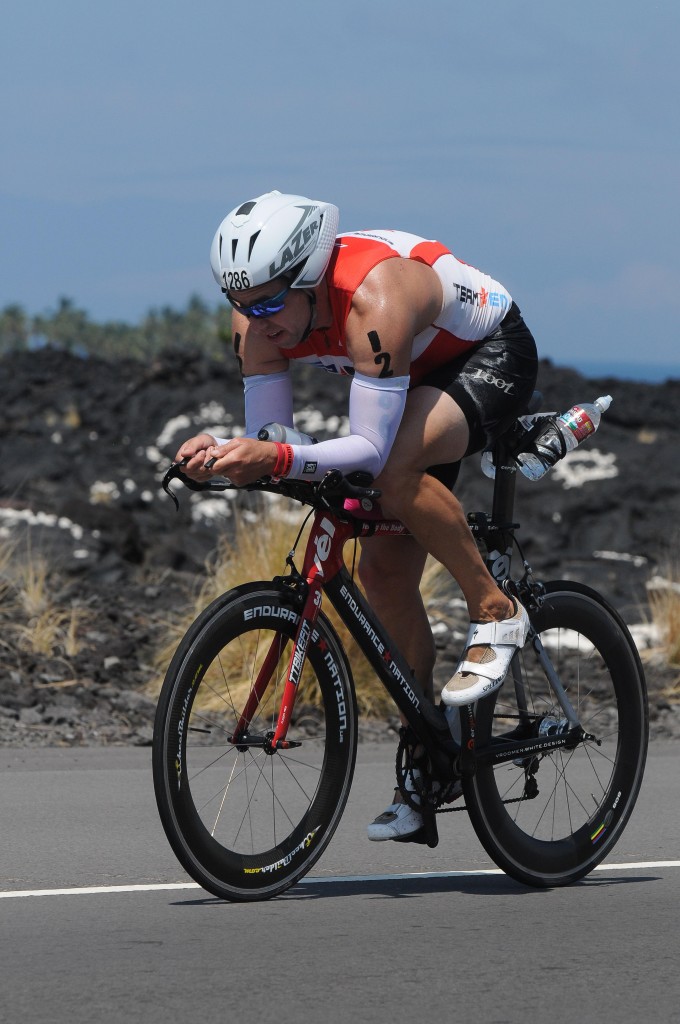You’ve trained for six, nine or more months for this day. The chaos of the swim is gone, you’ve gotten your cycling legs back and now it’s time to get to work, to get down to racing the Ironman® bike.
STOP!!
In our experience, if you’re going to booger months and months of training and ruin your race, you’re going to do it on the bike leg. Below are our tips for riding the optimum Ironman® bike leg.
There’s No Such Thing as a Good Bike Followed by a Poor Run
The last time we checked this was an Ironman® TRIATHLON — swim, bike, and run. The difference between a “good” swim or “bad” swim is only about 2-4 minutes. The difference between “easy” bike or a “hard” bike is only about 10-15 minutes. But the difference between a “good” and “bad” run can be measured in hours. In our experience, your chances of dramatically slowing down happen in the last six to eight miles of the run. Therefore your focus all day is on creating conditions for success in the final six to eight miles of the run, NOT on putting up a sexy bike split. The Ironman® run course is littered with the walking bodies of athletes who put up great bike splits. Just think about that.
Ride the Bike You Should, Not the Bike You Could
Your “could” bike split is the one you dream about, the one you told your friends on your last long ride when they remarked how fit you look, how hard you’ve been working, and ask you what you could ride at IMXX. In contrast, your “should” bike split is the bike that sets up the run. In our experience, the difference between Could and Should is about 10 to 15 minutes — add 10-15 minutes to that sexy Could split and set up the run. If you’ve made the mistake of riding too slowly…you have 26 miles of running to fix that mistake. But if you made the mistake of riding too fast…that mistake now has 26 miles of running to express itself.
Do the Opposite of Everyone Else
In our experience, over 80% of the Ironman® field doesn’t know how to properly execute the bike. Proper bike execution is then largely a matter of doing the opposite of everyone else.
- Ride easy for the first hour. Are you being passed by a LOT of people? That’s a very good thing, trust us.
- Managing your effort on this hill, setting up the run vs racing for $100 KOM prime they are not handing out at the top…and going backwards through the field? That’s a good thing, they will come back to you somewhere during the day.
Flatten the Course
You best cycling strategy to set up a great run to maintain a very steady effort across all terrain — no big effort surges on hills, no excessive coasting on downhills, etc. Imagine your foot is on a gas pedal:
- On a hill you give it just a little bit more gas…but just a little. Per the 80% rule above, everyone around will stomp in the gas and surge ahead of you. That’s a good thing.
- Across the crest of the hill and into the downhill, stay on the gas. Maintain that steady effort as everyone else comes way off the gas/coasts as they pay for that surging effort on the climb. You descend at 33-36mph, for example, to their 28-30mph, carrying that speed into the next hill…and the next…and the next.
- That foot on the gas pedal is locked in the same position on flats, false flats, slight downhills, etc.
Show Up with Enough Gears on Your Bike
Having the proper gearing for your course is a important part of our “flatten the course” strategy above. What gearing is best? In general, you can never have enough gears in an Ironman. More specifically, these are the gears that Coach Rich, a 5:05-15 Ironman® cyclist, would ride on US Ironman® courses:
- All: compact crank, 50/34 gearing, then…
- IMTX, FL, AZ: 23-11
- IMSG, Coeur d’Alene, IMLP, IMNYC, IMTremblant: 26-11, or 25-12
- IMWI: 26-11
Look for Free Speed First
112 miles is a long time for smart, slippery, aerodynamic choices to express themselves. In our experience, your biggest return on investment opportunities on the Ironman® bike are:
- Bike fit: The largest aerodynamic component of the bike/rider system is YOU. A proper bike fit can dramatically improve your aerodynamics while keeping you comfortable on the bike.
- Aero helmet: A big aerodynamic return for your $130-200 investment.
- Wheelbuilder.com AeroJacket disk cover: 99.99% of the aerodynamic benefits of a very expensive disk at a fraction of the cost.
- Bottle/tools placement: An efficient, clean, well-thought-out setup will also significantly improve your aerodynamics.



Astroross
I loved this article, the single piece of advice I took to Ironman Melbourne last month was to take it easy for the first hour on the bike. And yes people did pass me, all through that hour.
The result was I felt great for the run, I was comfortable running, walked through a lot of aid stations but was able to run at a pace that felt good. Towards the end of the marathon I felt like I was only getting faster, in the last 5km I was passing people and it felt so easy. Sight someone then chase them down and blow past them. The result was 2 hours better than my first Ironman and I was uninjured and feeling great.
Great advice guys, thanks,
Ross